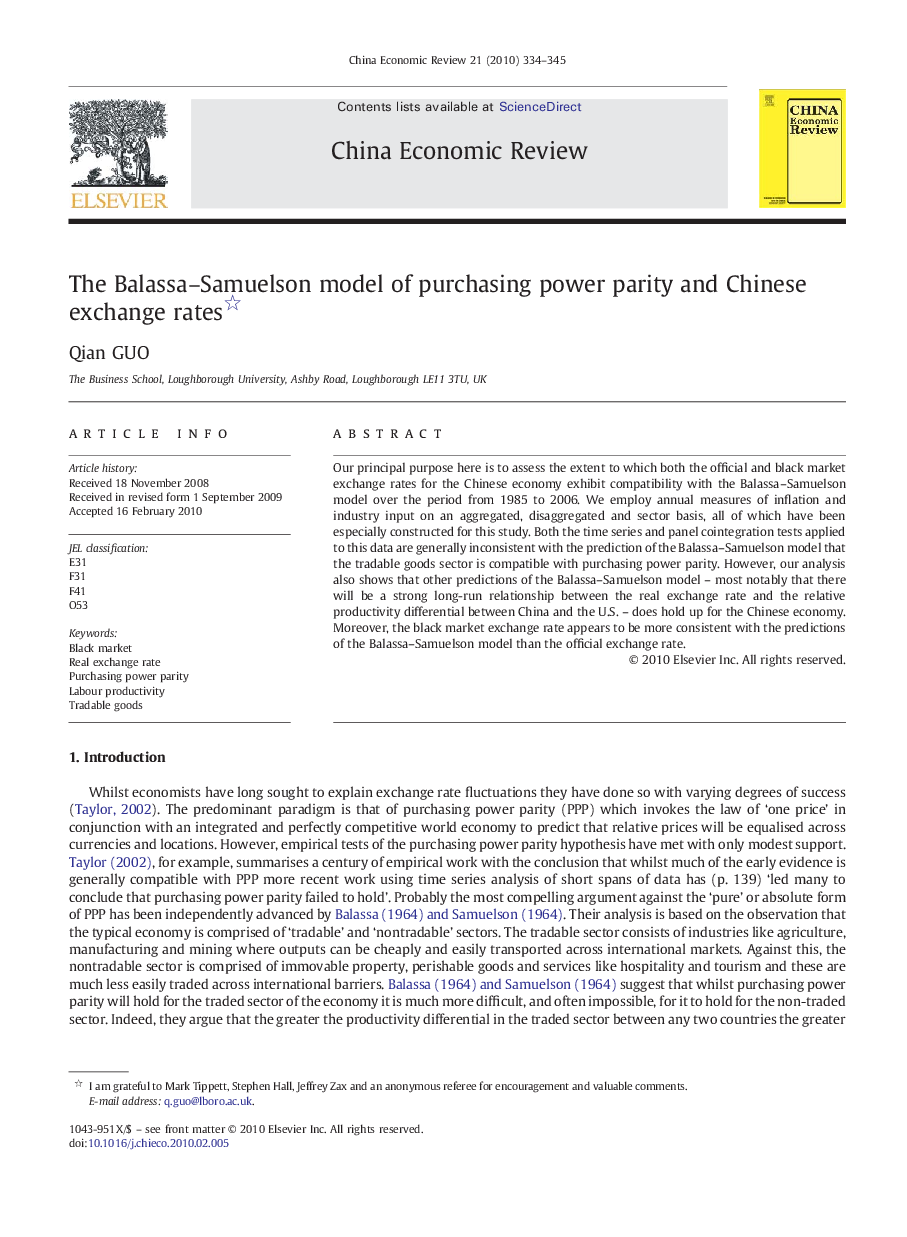| Article ID | Journal | Published Year | Pages | File Type |
|---|---|---|---|---|
| 5047938 | China Economic Review | 2010 | 12 Pages |
Our principal purpose here is to assess the extent to which both the official and black market exchange rates for the Chinese economy exhibit compatibility with the Balassa-Samuelson model over the period from 1985 to 2006. We employ annual measures of inflation and industry input on an aggregated, disaggregated and sector basis, all of which have been especially constructed for this study. Both the time series and panel cointegration tests applied to this data are generally inconsistent with the prediction of the Balassa-Samuelson model that the tradable goods sector is compatible with purchasing power parity. However, our analysis also shows that other predictions of the Balassa-Samuelson model - most notably that there will be a strong long-run relationship between the real exchange rate and the relative productivity differential between China and the U.S. - does hold up for the Chinese economy. Moreover, the black market exchange rate appears to be more consistent with the predictions of the Balassa-Samuelson model than the official exchange rate.
